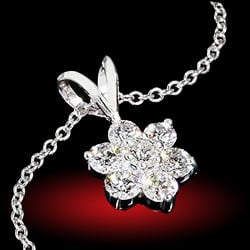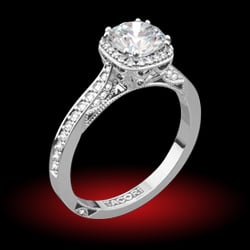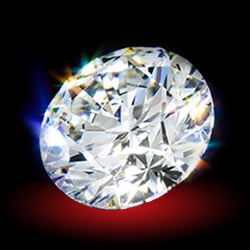Hi all..
I know I haven''t posted in a while, but I figured this would be a good place to post given the variety of people on here. I just thought I would tap into the insight of everyone, and I want to keep this very generic for certain reasons.
Me and my mother recently acquired 2 colored stones from a vendor. We decided to get them appraised, and we may end up taking the vendor up on their offer of having an indepedent appraisal done for a small fee given the difficulty we''re having finding one here.
We took the stones, and we dropped them off for an appraiser to evaluate. There was a problem.
The appraiser stated that the stones were in fact the type of specimen as stated, however the variety couldn''t be determined. The appraiser had doubts that it was in fact the variety as stated, but they couldn''t say what other variety it could be. We''re very skeptical on this as I wiped my case clean that the stone came in, and it appeared to be unopened, and the stone was in the exact same place in the case as I left it before I dropped it off.
The appraiser stated that if they were in fact the variety that the stones were sold as, they would be worth significantly more than the intake value that the jeweler put on the parcel. The appraiser advised we send both stones to AGTA for testing, and pending that, they would put a price on them. However, that is quite expensive. We were not charged a dime, but we''re quite skeptical.
There is another reason why we are suspicious as there is a particular inclusion that each of these 2 stones have. As far as I know, that specific inclusion uniquely identifies that stone. So I asked someone who is a GG and an appraiser, and just happens to be a dealer of the same type of stone.
I asked them if this particular inclusion is visible within the stone either unaided or a loupe, if that was in fact enough imperical evidence to say that this stone is of this family, and it is this exact variety. The answer by that GG was that the specific inclusion I referred to is a very good indicator, and that is imperical evidence to say that it is that specific variety. They also stated that if this particular inclusion is in fact visible as described, and this appraiser stated what they did, they too would be skeptical.
I emailed GIA. I asked them if they had a picture of this particular type of inclusion within a stone of that family, and I named 3 varieties to see if it in fact existed. I wanted a visual reference to compare what I have seen to what GIA states as being the type of inclusion that I am looking for. So I had to order 2 back issues of their magazine, but they both have color illustrations of what I am looking for in different specimens of the same variety. In asking, the reference desk said that they could not find any illustrations of anything with that specific inclusion in a stone of that type in any other variety except for the one that I suspect is the variety of the 2 stones we have.
Something isn''t right with the appraiser from what I can gather. They have stated it is a natrual stone of a certain family. However, when we say it was sold as a stone of this family and variety x, they doubt variety x but can offer no other alternate explanations that satisfy the criteria for any other possibility. We think that there was a test for refractivity, but that''s it.
I am being vague as I am for a certain reason, and I am hesitant to send the stones to AGTA simply because I learned of their price model. I know of another reputable lab (not to say AGTA is not reputable) that can give me the same answer for a lot less.
I don''t have pics as I don''t have a digital camera. My phone won''t transmit images, and the camera on that phone just stinks.
Is my skepticism justified here and do you think my logic is sound at the risk of having "observer bias"?
-joe
I know I haven''t posted in a while, but I figured this would be a good place to post given the variety of people on here. I just thought I would tap into the insight of everyone, and I want to keep this very generic for certain reasons.
Me and my mother recently acquired 2 colored stones from a vendor. We decided to get them appraised, and we may end up taking the vendor up on their offer of having an indepedent appraisal done for a small fee given the difficulty we''re having finding one here.
We took the stones, and we dropped them off for an appraiser to evaluate. There was a problem.
The appraiser stated that the stones were in fact the type of specimen as stated, however the variety couldn''t be determined. The appraiser had doubts that it was in fact the variety as stated, but they couldn''t say what other variety it could be. We''re very skeptical on this as I wiped my case clean that the stone came in, and it appeared to be unopened, and the stone was in the exact same place in the case as I left it before I dropped it off.
The appraiser stated that if they were in fact the variety that the stones were sold as, they would be worth significantly more than the intake value that the jeweler put on the parcel. The appraiser advised we send both stones to AGTA for testing, and pending that, they would put a price on them. However, that is quite expensive. We were not charged a dime, but we''re quite skeptical.
There is another reason why we are suspicious as there is a particular inclusion that each of these 2 stones have. As far as I know, that specific inclusion uniquely identifies that stone. So I asked someone who is a GG and an appraiser, and just happens to be a dealer of the same type of stone.
I asked them if this particular inclusion is visible within the stone either unaided or a loupe, if that was in fact enough imperical evidence to say that this stone is of this family, and it is this exact variety. The answer by that GG was that the specific inclusion I referred to is a very good indicator, and that is imperical evidence to say that it is that specific variety. They also stated that if this particular inclusion is in fact visible as described, and this appraiser stated what they did, they too would be skeptical.
I emailed GIA. I asked them if they had a picture of this particular type of inclusion within a stone of that family, and I named 3 varieties to see if it in fact existed. I wanted a visual reference to compare what I have seen to what GIA states as being the type of inclusion that I am looking for. So I had to order 2 back issues of their magazine, but they both have color illustrations of what I am looking for in different specimens of the same variety. In asking, the reference desk said that they could not find any illustrations of anything with that specific inclusion in a stone of that type in any other variety except for the one that I suspect is the variety of the 2 stones we have.
Something isn''t right with the appraiser from what I can gather. They have stated it is a natrual stone of a certain family. However, when we say it was sold as a stone of this family and variety x, they doubt variety x but can offer no other alternate explanations that satisfy the criteria for any other possibility. We think that there was a test for refractivity, but that''s it.
I am being vague as I am for a certain reason, and I am hesitant to send the stones to AGTA simply because I learned of their price model. I know of another reputable lab (not to say AGTA is not reputable) that can give me the same answer for a lot less.
I don''t have pics as I don''t have a digital camera. My phone won''t transmit images, and the camera on that phone just stinks.
Is my skepticism justified here and do you think my logic is sound at the risk of having "observer bias"?
-joe










300x240.png)